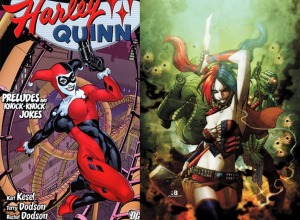Hellblazer, part 1 (or Running out of Time)
It’s an interesting quirk of american comics and cartoons that the characters rarely age despite the number of years that transpires since their first appearances on printed page. While Superman first appeared in 1932 which is 80 years ago, he still has the youthful look of a 30-year-old man (kryptonian physiology not withstanding). And that’s still not counting the various crises that seem to plague the dimensions of the DC universe. Captain America on the other hand, was born in 1920, was a soldier in WW2 and is currently in his twenties (granted he has the excuse of being frozen in time, but that’s another story). Regardless of the reason, characters in major comics tend to live in a perpetual youth and it’s not without reason: no one wants to read the adventures of 99-year-old Catwoman. It’s not relatable and it’s not exciting, intriguing or any other number of words.

It does bring up a problem when you want to reference real world events, however. If Captain America was in WWII and thawed out in 1994, he’s not going to be 21 forever. Just the fact that he witnessed the events of 9/11 grounds him to a timescale of some sort and that’s just it, that’s the problem right there. There’s only so many times I can read about Spider-Man punching out the Rhino or saving Mary Jane that I become bored with it. Status Quo is god in the world of comics and if nothing ever changes, if no one ever ages, then it’ll be decades upon decades of rehashing the same stories over and over. Yes, it’s true that new villains can appear or sidekicks and so forth, but the main characters themselves cease to change and therefore evolve. For a short while, Marvel published a comic titled The Amazing Spider-Girl which detailed the adventures of May “Mayday” Parker the daughter of Peter and Mary Jane. Not only did she carry the mantle and legacy of her father, other characters and progeny also carried on with the names of their predecessors. They were new takes on old favorites and some were entirely original characters of their own. New dramas unfolded and she faced different problems than what Peter had faced: although she was only somewhat bullied in school, she faced the challenges that having parents with knowledge of her superhero identity would bring.

While admittedly Spider-Girl could have been better written, it showed one possible roads that comics could take to address the increasing problem with the timescale of their characters. DC has solved this issue by resetting the universe every decade or so with a dimension-shattering event (sometimes by having a character literally shatter the dimensions by punching that damn hard. I’m looking at you Superboy-Prime). A move like that is a double-edged sword: on the one hand you can ‘fix’ or change characters around however you see fit to breathe new life into them or give them a second chance at capturing a now different generation. On the other hand, it can and oftentimes does alienate more seasoned readers who will throw loud hissy fits and cry “THAT’S NOT MY (insert character here)”. Characters can be changed for the bad and lose all semblance of their former selves.

Marvel has instead opted for the sliding time-scale which is arbitrary at best. 5 years of real world time equates to only 1 in the life of the character. While this works as a relatively short-term fix, as time progresses it becomes increasingly hard to maintain. Captain America is the most noticeable example because of his status as a WWII veteran. Marvel tends to tweak this by softly resetting small aspects here and there, e.g. Magneto originally being a young adult when he was sent to the concentration camps of Nazi Germany and now having been a young boy to help ease with the passage of time.
All of this leads me to Hellblazer, a comic first published in January of 1988 whose roots began in Alan Moore’s Swamp Thing. It is the defining characteristic of this title that the characters age in real-time. John Constantine was born May 10, 1953 and in 1993 he celebrated his 40th birthday in comic. He has aged, grown older and so has his supporting cast. John’s not as young as he used to be and his attitude and views reflect that as well. That tiny but incredibly important attribute is what I wanted to see more than anything else in a comic. Someone who would grow and change in subtle ways before ultimately dying. His niece Gemma went from being 10 years old in her first appearance in issue #4 to now being approximately 34 years old. There is history and continuity that matters to the story (I’ll admit, I’m a sucker for continuity). All of this adds up to a comic of a different flavor, a different variety. Amidst the demons and other supernatural horrors that Constantine laughs at and spits on, he still deals with everyday challenges such as break ups and deaths. In one of his greatest story arcs he must battle lung cancer as a very real result of his smoking 30-40 Silk Cuts a day with a very unreal solution that is unique to his take on things. It’s different is what I”m trying to emphasize. Not many comics (or other media for that matter) take the time to age their protagonist, much less do so in conjunction to real-time. It’s not the only defining trait of this comic, but it is its most defining. Having said that, I’ll delve into the rest of what makes this single title so riveting to me in my next article.
